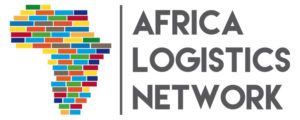With the recent events of the last days of March 2021, the importance of the canals and especially the main ones, the Suez Canal and the Panama Canal have been put in the spotlight.
These routes are vital for the shipping industry and the world economy in general as they permit an important saving of sailing time that reduces the transit time and costs very much. More than 10% of goods transiting around the globe are using these canals indeed. The situation is now, fortunately, getting back to normal but in only a few days this unfortunate event generated delays in transit time for many containers, port omissions, blank sailings to recover the schedule and some congestion in transhipment ports.
At Africa Container Shipping we have been closely monitoring the situation on a permanent basis. All of our clients affected by this event have been duly informed and constantly updated. Hence, if you have any doubt about your shipments don’t hesitate to póngase en contacto con nosotros and/or visit our website where you can easily track your containers: just click here!
The Suez Canal (Egypt)
This canal connects the Mediterranean Sea to the Red Sea through the Isthmus of Suez and divides Africa y Asia.
Opened in 1869, the Suez Canal offers a more direct route between Asia, the Indian Subcontinent, the Persian Gulf and Europe via the Mediterranean Sea and the Red Sea, reducing the journey distance by approx. 9000 km/10 days instead of having to pass via South Africa and the Cape of Good Hope.
The Northern entrance of the Suez Canal is located in Port Said and the Southern entrance is Port Tewfik in the city of Suez. Its length is 193.3 km including its northern and southern access channels.
In 2020, over 18’500 vessels transited through this canal, which represent an average of 50 vessels per day. Contrary to Panama Canal, Suez Canal has no locks, and the transit takes between 11 and 16 hours. All cargo from Europe to East Africa, Indian Ocean, Asia, Middle East, Indian Subcontinent and vice versa is routed via the Suez Canal.

The Panama Canal (Republic of Panama)
This canal connects the Atlantic Ocean with the Pacific Ocean.
The Panama Canal opened in 1914 and cuts across the Isthmus of Panama using 5 groups of locks including the 2 built during the Panama Canal expansion project (2007 to 2015) that doubled the capacity of the Panama Canal by adding a new lane allowing larger ships to transit through it by increasing the width and depth of the lanes and locks.
The New Panamax size vessels (Length 366m / Width 49m / Draft 15.2m / Capacity 12’000 TEUs) can transit through this new waterway that started operations in 2016. The other lanes are limited for vessels up to Panamax size (Length 294m / Width 32.3m / Draft 12.04m / Capacity 5’000 TEUs).
The Atlantic entrance is in the city of Colon and its Manzanillo and Cristobal terminals and the Pacific entrance is in Balboa near the capital Panama City. The transit takes between 10 to 12 hours and more than 12’000 vessels are using it every year. All cargo from Asia to USA East Coast/Caribbean and from South America West Coast-USA East Coast/Caribbean/ Europe and vice versa transits through the Panama Canal.







